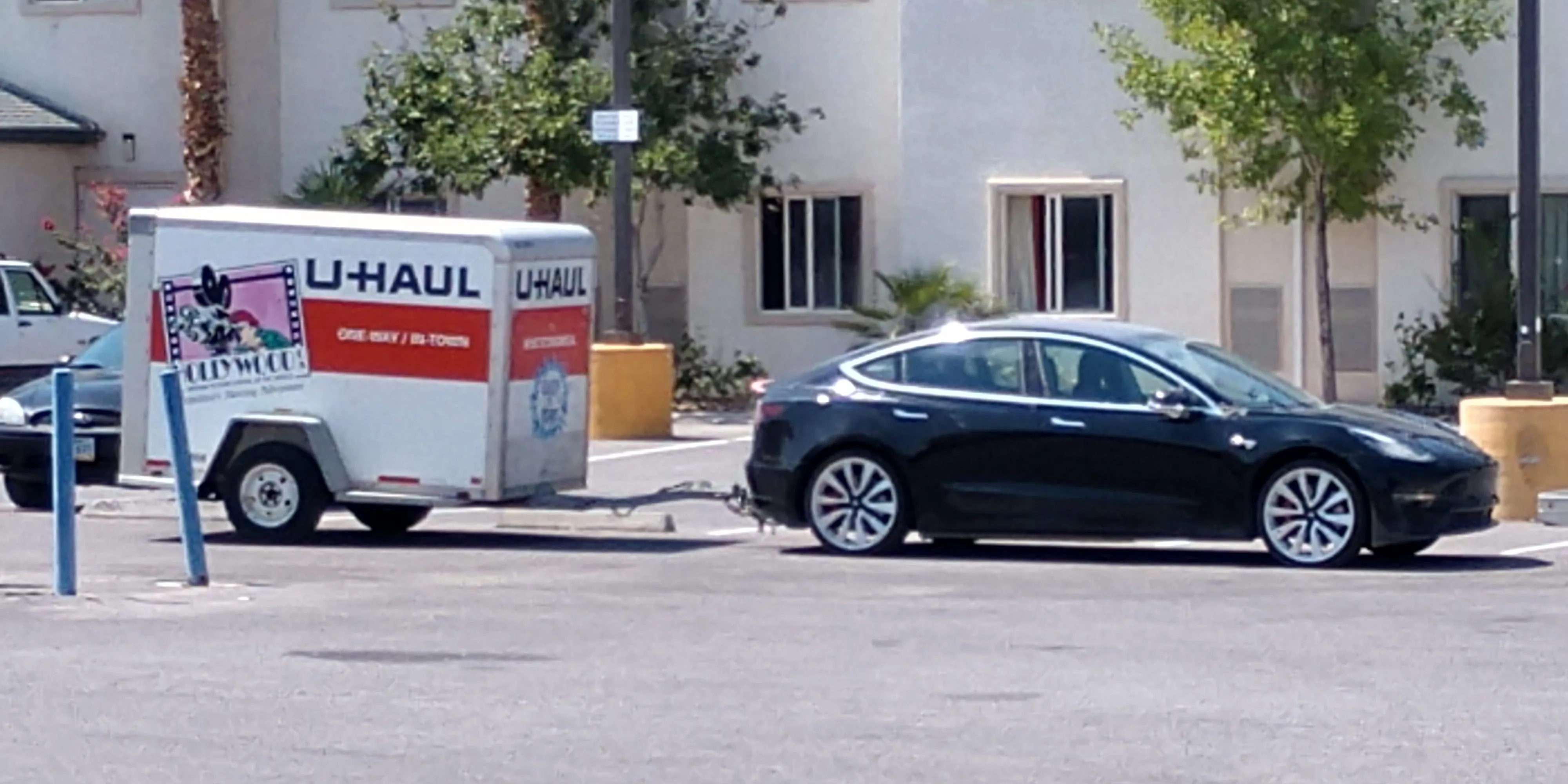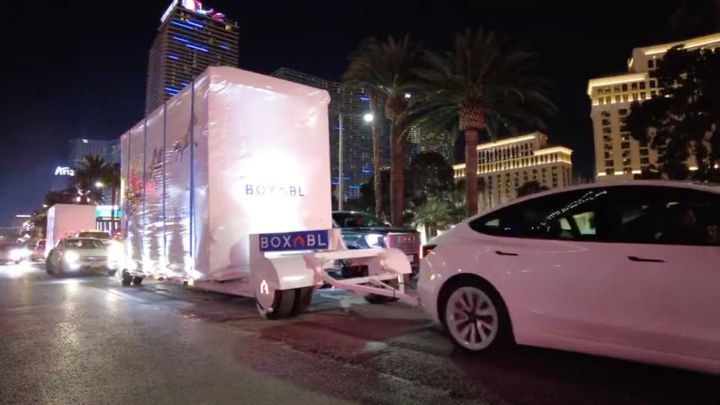


The Tesla Model 3 has captured the hearts of car enthusiasts and environmentally conscious drivers alike, offering a compelling blend of sleek design, cutting-edge technology, and exhilarating performance. However, one question that frequently arises among potential buyers is whether this electric sedan can handle the demands of towing a trailer or camper. In this comprehensive article, we'll delve into the towing capabilities of the Tesla Model 3, exploring its official specifications, real-world experiences, limitations, and best practices to ensure a safe and enjoyable towing experience.

The Tesla Model 3 is designed to accommodate towing needs within specific limits, as outlined by the manufacturer's official specifications. Let's take a closer look at the details:
| Trailer Type | Maximum Towing Capacity |
|---|---|
| Braked Trailer | 1,000 kg (2,200 lbs) |
| Unbraked Trailer | 750 kg (1,653 lbs) |
It's crucial to note that exceeding these towing capacity limits can potentially cause damage to the vehicle, compromise safety, and void the warranty. Tesla strongly recommends adhering to the specified limits and following proper towing guidelines to ensure a safe and enjoyable experience.
These towing capacity specifications apply to all Model 3 variants, including the Standard Range, Long Range, and Performance versions, regardless of the model year or region. This consistency ensures that owners can make informed decisions about their towing needs without worrying about variations among different Model 3 configurations.
While official specifications provide a general guideline, real-world experiences from Model 3 owners offer valuable insights into the practical aspects of towing with this electric vehicle.
Several Model 3 owners have shared their successful towing experiences, ranging from small utility trailers to lightweight campers and teardrop trailers. One owner reported towing a 1,200 lb (544 kg) teardrop trailer with a 100 lb (45 kg) tongue weight without any issues, demonstrating the Model 3's capability within its specified limits.
In a remarkable display of the Model 3's potential, one owner documented towing a 15,000 lb (6,804 kg) modular home. While this scenario is likely an extreme publicity stunt and not recommended for regular use, it showcases the vehicle's impressive towing power when pushed to its limits.
While the Tesla Model 3 is capable of towing within its specified limits, there are several limitations and precautions that owners should be aware of to ensure a safe and enjoyable towing experience.
Range and Efficiency Impact: Towing a trailer will significantly reduce the Model 3's range and increase energy consumption due to the added weight and aerodynamic drag. Owners should plan their trips accordingly and account for more frequent charging stops to avoid running out of battery power.
Trailer Brakes Requirement: For trailers exceeding 750 kg (1,653 lbs), Tesla recommends using a braked trailer system. This system connects the trailer's brakes to the vehicle's braking system, providing better control and stopping power when towing heavier loads.
Tow Hitch Installation: The Model 3 does not come standard with a tow hitch, which is a crucial component for attaching a trailer to the vehicle. Owners will need to purchase and install a compatible tow hitch from Tesla or a third-party supplier before embarking on any towing adventures.
Trailer Wiring and Lighting: Proper wiring and lighting connections must be established between the Model 3 and the trailer to ensure that turn signals, brake lights, and other electrical components function correctly. Failure to establish these connections can compromise safety and potentially violate local regulations.
Trailer Mode: When towing, Tesla recommends enabling the "Trailer Mode" feature on the vehicle's touchscreen. This mode adjusts certain vehicle systems, such as regenerative braking and stability control, to optimize performance and handling while towing a trailer.
Tire Pressure Adjustment: Towing a trailer adds additional weight and stress to the vehicle's tires. To ensure proper handling and safety, owners should adjust their tire pressures to accommodate the additional load, as specified in the owner's manual.
Speed and Handling Considerations: Towing a trailer will affect the Model 3's handling, stability, and braking performance. Owners should reduce their driving speed, increase following distances, and exercise caution when making turns or sudden maneuvers to maintain control and avoid accidents.
While the Tesla Model 3 offers a respectable towing capacity, it's worth comparing it to other electric vehicles in its class to understand its relative capabilities.
| Electric Vehicle Model | Maximum Towing Capacity (Braked Trailer) |
|---|---|
| Tesla Model 3 | 1,000 kg (2,200 lbs) |
| Tesla Model Y | 1,600 kg (3,527 lbs) |
| Tesla Model X | 2,250 kg (4,960 lbs) |
The Tesla Model Y and Model X offer higher towing capacities, which may be more suitable for those with more demanding towing needs, such as larger campers or heavier trailers. However, the Model 3's towing capacity is still sufficient for many recreational and utility purposes, making it a versatile choice for those with moderate towing requirements.

When towing with an electric vehicle like the Tesla Model 3, it's crucial to comply with local laws and regulations regarding towing limits, trailer specifications, and safety requirements. These regulations may vary by region or country, so owners should familiarize themselves with the applicable rules in their area.
Failure to comply with local regulations can result in fines, legal consequences, and potential safety hazards. It's always better to err on the side of caution and ensure that your towing setup meets all necessary requirements.
The Tesla Model 3 is a capable and versatile electric vehicle that offers owners the ability to tow trailers and campers within its specified limits. By understanding the official towing capacity specifications, real-world experiences, limitations, and precautions, Model 3 owners can confidently embark on their towing adventures while ensuring a safe and enjoyable experience.
Remember, adhering to Tesla's guidelines, adjusting vehicle settings appropriately, and exercising caution when towing are essential for maximizing the Model 3's towing capabilities while minimizing potential risks. With proper preparation and knowledge, the Tesla Model 3 can be a reliable and eco-friendly companion for your next road trip or camping excursion.
Yes, you can install an aftermarket tow hitch on a used Tesla Model 3 as long as it is compatible with the vehicle. Proper installation by a qualified professional is recommended.
As long as you follow Tesla's towing guidelines and do not exceed the specified towing capacity limits, towing should not void the vehicle's warranty.
Towing a trailer will increase the energy consumption of the Tesla Model 3, which can potentially reduce the battery's overall lifespan if done frequently or for extended periods.
Yes, you can tow a lightweight camper or teardrop trailer with a Tesla Model 3, as long as the combined weight of the camper and any cargo does not exceed the vehicle's specified towing capacity.
Tesla does not explicitly require a weight distribution hitch for towing with the Model 3, but it may be recommended for heavier trailers to improve stability and handling.
When towing a trailer, the Tesla Model 3's regenerative braking system may be adjusted or limited to ensure proper braking performance and control.
Yes, you can tow a small boat or personal watercraft with a Tesla Model 3, as long as the combined weight of the boat, trailer, and any cargo does not exceed the vehicle's specified towing capacity.
The Tesla Model 3 does not come with a dedicated trailer wiring harness from the factory. You may need to purchase and install a compatible wiring harness to connect the trailer's lighting and electrical systems.
Yes, you can tow a trailer with a Tesla Model 3 in cold weather, but you should expect a further reduction in range and energy efficiency due to the additional strain on the battery and systems.
Yes, some of the Tesla Model 3's autopilot and driver assistance features may be limited or disabled when towing a trailer for safety reasons.

Sarah isn't your average gearhead. With a double major in Mechanical Engineering and Automotive Technology, she dived straight into the world of car repair. After 15 years of turning wrenches at dealerships and independent shops, Sarah joined MICDOT to share her expertise and passion for making cars run like new. Her in-depth knowledge and knack for explaining complex issues in simple terms make her a valuable asset to our team.



